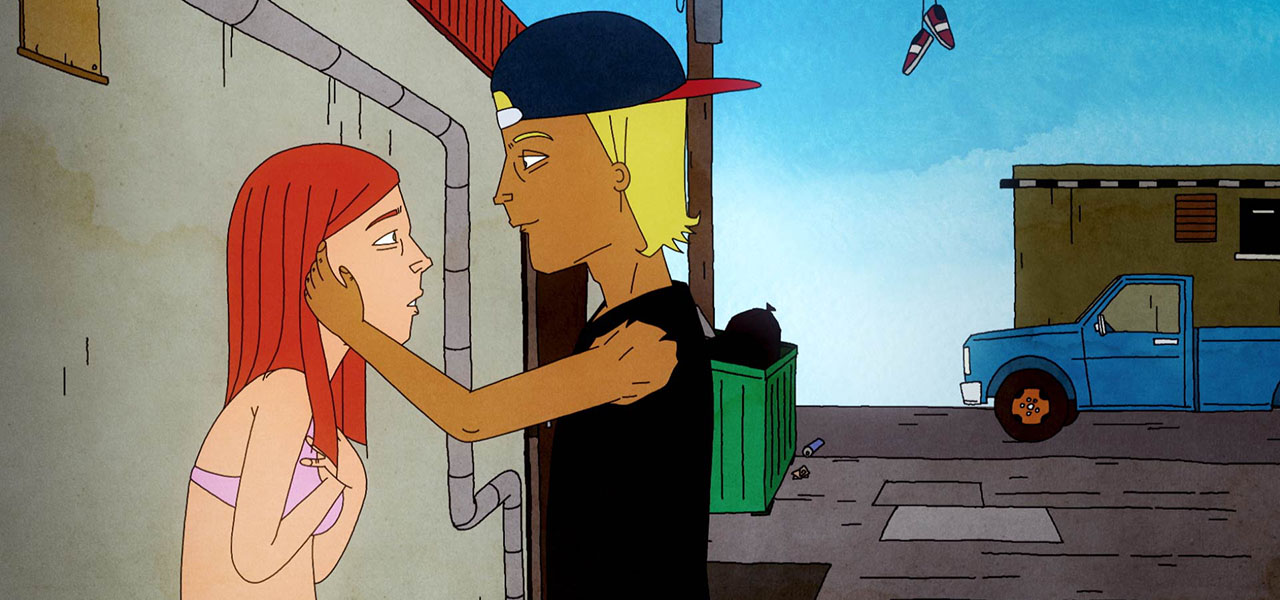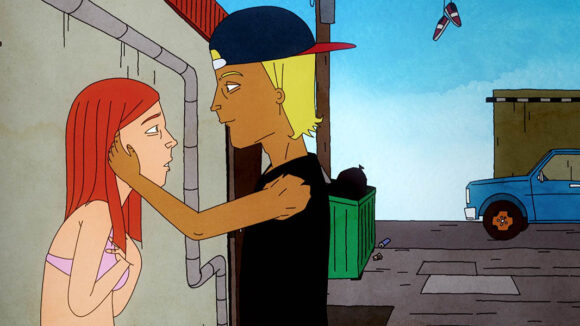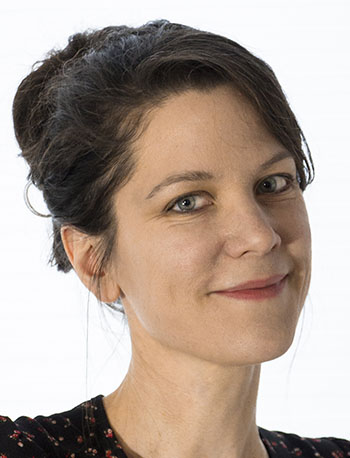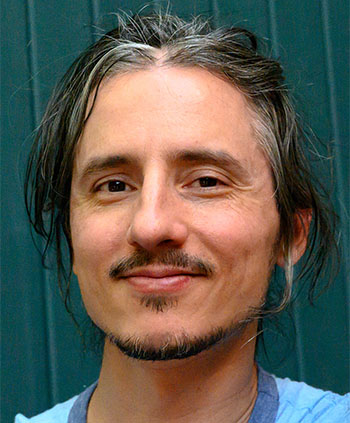

2025 Oscars Short Film Contenders: ‘A Crab In The Pool’ Directors Alexandra Myotte And Jean-Sebastien Hamel
Cartoon Brew is putting the spotlight on animated short films that have qualified for the 2025 Oscars.
In this installment, we’re looking at A Crab In The Pool from filmmakers Alexandra Myotte and Jean-Sebastien Hamel. The short earned its Oscars qualification by winning the Anim’est trophy at the Anim’est International Animation Film Festival and the best short animation at the Shorts Shorts Film Festival.
In a run-down neighborhood, Zoe and her little brother Theo are left to fend for themselves. A young adolescent, Zoe is a ball of anger haunted by an intimate terror. Theo, still a child, flees reality into a fantastical world. During a scorching summer day, the two children will have to burst the abscess of their relationship so as not to lose each other. The short is produced by Montreal-based Sémaphore Films.
Cartoon Brew: Relations between children at different ages are not often depicted in such a way, especially in the animated form. How did you research these relationships, and how much is drawn from your own experiences?

Alexandra Myotte and Jean-Sebastien Hamel: As we were first writing the movie, we did our research into how children and teenagers are affected by the death of a loved one, depending on their age. To sum up, teenagers, like our character Zoé, are very aware of the finality of death and will often react with depression, rebelliousness, or anger. Younger children, like our Théo, find it harder to grasp that the person who has died is gone forever. They may take refuge in a fantasy world where their loved one can return.
We also take inspiration in our own lives. Zoé and Théo are in a way avatars for the two of us: Zoé is Alexandra, the one who is scared by cancer’s looming presence, while Théo is Jean-Sébastien, the one who suffers alongside his loved ones, who witnesses the events but is somewhat left out. Some elements in the film are directly lifted from our childhood memories; for example, Théo’s glasses are a creation of Jean-Sébastien. When he was a child, his little sister suffered from motion sickness whenever they travelled, so Jean-Sébastien would pretend to look at her with these special glasses to make her laugh and forget about her discomfort.
What was it about this story or concept that connected with you and compelled you to direct the film?

The film is inspired by a very personal experience. Alexandra had breast cancer seven years ago, and so did Jean-Sébastien’s mother. Fortunately, they both survived but many, like one character in our story, do not. It’s a very difficult subject to talk about because it makes us vulnerable; to live in that headspace for more than two years can be draining after a while. At the same time, we have so many stories to tell and life is so short. We’ve been a couple for fifteen years, and the fact that we’ve been confronted with illness in this way, the now inevitable awareness of death, has created this urgency to make films that allow us both to fulfill ourselves as artists, but also to face our demons.
After every screening of the film, we have people who come to us and tell us that they know someone close who is sick, who passed… It’s such a universal reality, and the bond we feel together at that moment is very precious.
What did you learn through the experience of making this film, either production-wise, filmmaking-wise, creatively, or about the subject matter?
At the beginning, we figured we’d work with a nice plan and stick to the good old script/storyboard/animation/post-production routine; after all, it can be maddening to work weeks on a few seconds of animation that end up on the cutting room floor. But along the way, we learnt to bring some improvisation to the mix. We were unsatisfied with the ending so we scrapped it three-quarters of the way and made another. We noticed that the best ideas often came under pressure. And some of the wildest visuals would pop up just before we went to sleep.
As for the two of us working together, this was the first time we were completely 50-50 on creative decision-making. We had to learn to leave our ego at the door and always think of what was the best for the story. We found a nice balance in playing our respective strengths and weaknesses, being very fluid in how we’d share the various hats of production. Luckily, neither our professional nor personal relationship imploded in the process.
Can you describe how you developed your visual approach to the film? Why did you settle on this style/technique?
We’re both kids of the ’90s, so we grew up with MTV’s Liquid Television and their surreal, wacky 2d animations; our film style has been compared to Mike Judge, which is a badge of honor for us! This animation style is basically in our DNA and it came naturally to apply it to our story, which is psychedelic, trashy, yet emotional all at once.
The film was made on a very small budget, and 95% of the work – script, storyboard, animation, editing, even some voices – was done by just the two of us. That’s around 4,000 work hours over two years. This forced us to find a simpler, more minimalist hand-drawn animation technique, because we didn’t have the team or the budget to produce a film otherwise. But since we work with animation, we have a privilege to convey our wildest ideas onto the screen: our imagination is the limit and we have to take advantage of this. We always enjoy peppering our film with unexpected transitions or visual surprises to keep the viewers on their toes.

.png)